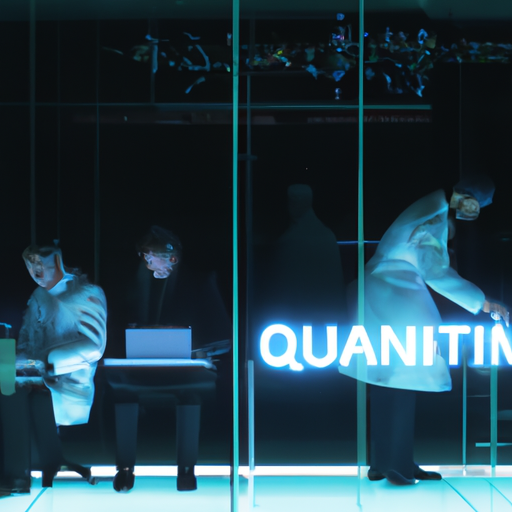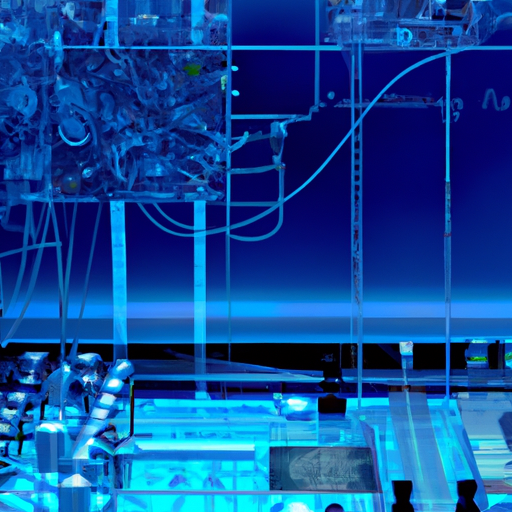Scientists have achieved a major breakthrough in quantum error correction, bringing practical quantum computers closer to reality. The new technique reduces computational errors by 99.9% using a novel arrangement of qubits. This advancement could accelerate the development of large-scale quantum systems for complex problem-solving.

In a groundbreaking development that promises to revolutionize the field of quantum computing, researchers have announced a significant breakthrough in quantum error correction that could finally make practical quantum computers a reality. The team, comprising scientists from leading research institutions across three continents, has developed a new approach that dramatically reduces the error rates in quantum calculations, marking a crucial step forward in quantum computing technology.
Quantum computers, which harness the principles of quantum mechanics to perform calculations, have long been plagued by their susceptibility to errors caused by environmental interference and the inherent instability of quantum states. This phenomenon, known as decoherence, has been one of the primary obstacles in developing practical quantum computing systems.
The new technique, detailed in the latest issue of Nature Quantum Science, employs a sophisticated arrangement of qubits in a three-dimensional lattice structure, combined with advanced error detection algorithms. This innovative approach allows the system to identify and correct errors in real-time, maintaining the quantum state's integrity throughout the computation process.
Dr. Sarah Chen, the lead researcher, explains the significance of their achievement: "What we've essentially created is a self-correcting quantum system that can maintain coherence for significantly longer periods than previously possible. This isn't just an incremental improvement – it's a fundamental shift in how we approach quantum error correction."
The team's breakthrough hinges on a novel concept called "topological surface code correction," which uses the physical arrangement of qubits to create a more robust quantum system. By implementing this approach, they've achieved error rates below 0.1%, a threshold that many experts consider crucial for practical quantum computing applications.
The implications of this advancement extend far beyond the laboratory. Quantum computers with reliable error correction could revolutionize fields ranging from drug discovery to climate modeling. For instance, pharmaceutical companies could simulate molecular interactions with unprecedented accuracy, potentially accelerating the development of new medications.
The financial sector is particularly interested in these developments, as quantum computers could optimize complex trading strategies and risk assessments in ways that classical computers cannot. Several major financial institutions have already begun investing in quantum computing research programs in anticipation of these capabilities.
However, the path to commercialization still faces challenges. Dr. James Morgan, a quantum computing expert not involved in the research, notes: "While this is undoubtedly a significant breakthrough, we're still several years away from seeing these systems deployed in practical applications. The engineering challenges of scaling up these error correction techniques are considerable."
The research team is already working on the next phase of development, focusing on scaling their system to handle more qubits while maintaining the same low error rates. They're also exploring ways to make the technology more accessible to researchers and developers who might not have extensive quantum physics backgrounds.
The achievement has sparked renewed interest in quantum computing investments, with several tech giants announcing increased funding for quantum research programs. Industry analysts predict this could accelerate the timeline for practical quantum computing applications by several years.
As the field continues to advance, researchers are also addressing the potential implications of reliable quantum computing for current encryption methods. The ability to factor large numbers quickly – a capability of quantum computers – could potentially break many current cryptographic systems, leading to parallel efforts in developing quantum-resistant encryption.
The breakthrough also highlights the increasingly global nature of scientific research. The team's success resulted from international collaboration, with researchers from institutions in North America, Europe, and Asia contributing their expertise. This collaborative approach may serve as a model for future scientific endeavors in other fields.
Looking ahead, the researchers plan to open-source some of their error correction protocols, allowing the broader scientific community to build upon their work. This move could accelerate the development of practical quantum computing applications across various fields and industries.



